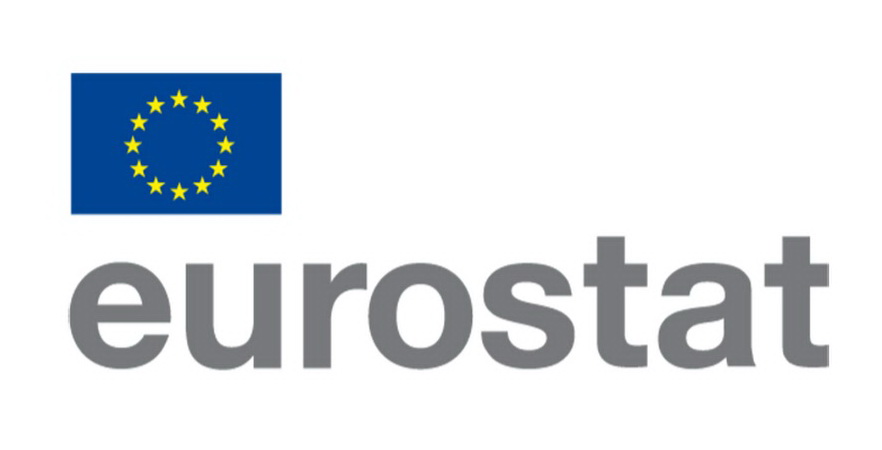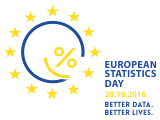| Category: | Economic statistics |
| Area: | Agriculture and fishing |
| Survey / data collection: | Quarterly survey on expenditures and production of agricultural holdings |
| MONSTAT metadata |
|---|
| Reference metadata |
| 1. Contact |
| 2. Metadata update |
| 3. Statistical presentation |
| 4. Unit of measure |
| 5. Reference period |
| 6. Institutional mandate |
| 7. Confidentiality |
| 8. Release policy |
| 9. Frequency of dissemination |
| 10. Accessibility and clarity |
| 11. Quality management |
| 12. Relevance |
| 13. Accuracy and reliability |
| 14. Timeliness and punctuality |
| 15. Coherence and Comparability |
| 17. Data revision |
| 18. Statistical processing |
| 19. Comment |
Note: For any question on metadata, please contact MONSTAT metadata support.
| 1. Contact Vrh | |
| 1.1. Contact organization: | Statistical Office of Montenegro - MONSTAT |
| 1.2. Contact organization unit: | Economic accounts in Agriculture, Forestry and Environment Department |
| 1.2. Contact organization unit: | IV Proleterske br. 2 , 81000 Podgorica, Crna Gora |
| 2. Metadata update Top | |
| 2.1. Metadata last certified: | Not available. |
| 2.2. Metadata last posted: | 29 December 2023 |
| 2.3. Metadata last update: | 24/08/2022 |
| 3. Statistical presentation Top | |
| 3.1. Data description: | The purpose of the survey is collecting data on the labor force in agriculture, the means and services used in agricultural production, the use and sale of plant and animal husbandry products, a number of livestock and livestock markets, as well as the processing of agricultural products as an input for calculating the economic account in agriculture. |
| 3.2. Classification system: | Sample. |
| 3.3. Sector coverage: | Sector A - Agriculture, forestry and fishery. |
| 3.4. Statistical concepts and definitions: | ECONOMIC ACCOUNTS IN AGRICULTURE represent a set of accounts (production account, income account, entrepreneurial income account, capital account and labor input) for the purpose of measuring, describing and analyzing the formation of income from agricultural family activities. AGRICULTURAL DISTRICT is a unique technical economic unit with a single administration, which carries out agricultural activities and can be a family farm or business entity. FAMILY AGRICULTURAL HOLDING is a household that uses at least 1000 m2 of agricultural land or less than 1000 m2 of agricultural land, and possesses: 1 cow and 1 calf, or 1 cow and 1 bullock, or 1 cow and 2 adult cattle, or 5 adult sheep or goats, or 3 adult pigs, or 4 adult sheep, goats or pigs together, or 50 pieces of adult cattle, or 20 bee hives. BREEDING PRODUCTION means the cultivation of certain categories of livestock at the end of the quarter, live juniper (calves, lambs, yarrow, piglets and pilates), weight (live measure) by individual cattle categories, slaughtered for farm needs, weight (live measure) per the individual cattle sold, as well as the average daily amount of milk that the farm received from cows, sheep and goats during the reference period. CROP PRODUCTION is the production of certain types of cereals, fodder plants, vegetables and fruits, etc. The yield represents the total quantity of cereals, vegetables and fruits produced, by species during the quarter, regardless of whether the products are used in the household or are intended for sale. MIXED AGRICULTURAL PRODUCTION is a combined production of crops and animals. AGRICULTURAL CONTRACTUAL WORK is carried out by specialized groups, commercial enterprises or individuals that provide machinery, equipment and personnel for performing work under a contract at some level of agricultural production. Agricultural contracted work must be: a) a part of the agricultural production process b) linked to the production of agricultural products INDEPENDENT UNDECLARED SECONDARY ACTIVITIES are activities closely related to agricultural production for which it is not possible to separately record production data, intermediate consumption, compensation for employees, input of labor, gross fixed capital investments from the same data for the main agricultural activity. Non-detrimental non-agricultural secondary activities can be divided into two main groups: 1. Secondary activities representing continuation of agricultural activity and using agricultural products a) processing of agricultural products - processing of milk into butter, cheese and other dairy products - processing of fruit and vegetables into juices, preserved food items, alcohol drinks and other ???products - grapes and wine in alcoholic products - knitting from plant material (wool - textile, linen - textile, etc.) - meat in meat products - processing of other agricultural products b) classification and packaging of agricultural products 2. Secondary activities involving an agricultural holding and its means of agricultural production (equipment, plants, buildings, labor) a) agritourism - different types of accommodation, meals, etc. b) stores at the farm - retail sale of other products not produced on the holding c) sports and recreation - the use of land for riding, fishing and the like d) Agricultural services for third parties - hire and repairs of agricultural machinery (rent without labor), irrigation projects, agricultural advisory services, storage of products and the like e) fishing g) other activities involving the use of land and means of agricultural production INTERMEDIARY (CONSUMER) CONSUMPTION OR COST OF PRODUCTION (raw material) is the value of all goods and services used as input capital in the production process |
| 3.5. Statistical unit: | The observation units are: Family agricultural holdings, business entities and agricultural cooperatives engaged in agricultural production according to the Classification of Activities in the sector A - Agriculture, Forestry and Fishery. |
| 3.6. Statistical population: | Reporting units are family agricultural holdings and all business entities and agricultural cooperatives engaged in agricultural production according to the Classification of Activities in the sector A - Agriculture, Forestry and Fishery. |
| 3.7. Reference area: | Montenegro. |
| 3.8. Time coverage: | 2010 - 2019. |
| 3.9. Base period: | Data are collected from September 2010. |
| 4. Unit of measure Top | |
| EUR kg l number of heads | |
| 5. Reference period Top | |
| The reference period for this survey is quarterly | |
| 6. Institutional mandate Top | |
| 6.1. Legal acts and other agreements: | The Law on Official Statistics and Official Statistical System (Official Gazette of Montenegro No 18/12, 047/19) defines provisions for collection, processing, and dissemination of data. The Law provides to the Statistical Office legal powers to collect and access the data necessary for the implementation of Programme and Annual Plan. The Law gives a priority to the use of administrative data and right of access to individual data that are a result of survey of other official statistical producers. As an annex to legal provisions, Statistical Office has signed several memoranda on cooperation with administrative data providers. |
| 6.2. Data sharing: | Signed agreement on cooperation with the official statistical producers: 1. Customs Administration; 2. Tax Administration; 3. Ministry of Finance; 4. Central Bank of Montenegro; 5. Trilateral agreement (MONSTAT, Ministry of Finance, and Central Bank of Montenegro). International institutions: 1. EUROSTAT; 2. UN organizations; 3. IMF; 4. World Bank. |
| 7. Confidentiality Top | |
| 7.1. Confidentiality - policy: | Articles 53-60 of the Law on Official Statistics and Official Statistical System ("Official Gazette of Montenegro" No 18/12, 047/19) provide a framework for protection, use, and transmission of confidential data. MONSTAT has produced two comprehensive rulebooks that cover the procedures for individual data protection as well as keeping individual records. With purpose of the realisation legal framework on functioning of security system and statistical confidentiality there was adopted the Rulebook on keeping statistical data by which manner, time, technical conditions and organization of statistical data storage to prevent their destroying, misappropriation, and unauthorized use is regulated as well as the Rulebook on contents and manner of keeping records on users of individual statistical data by which contents and manner of keeping records on users of individual statistical data is regular. Pursuant to the Article 59, an access to the confidential data is limited to persons performing duties and tasks of official statistical producer and up to the stage the data are necessary for official statistical production. Persons that performs duties and tasks within official statistical producers must sign the statement on respecting the principle of confidentiality. Law on Official Statistics and Official Statistical System is aligned with the Regulation No 223/2009 and the Regulation (EU) 2015/759 from 29 April 2015 that also regulate confidentiality provisions. The Government of Montenegro adopted the Statement on Commitment of Confidence in Official Statistics (Commitment of Confidence). |
| 7.2. Confidentiality - data treatment: | According to Article 56 of the Law on Official Statistics and Official Statistical System, individual data on natural or legal persons shall be confidential and represent official secret. According to Article 57, confidential data will used only for statistical purposes and will be expressed in aggregate form. |
| 8. Release policy Top | |
| 8.1. Release calendar: | The Law on Official Statistics and Official Statistical System ("Official Gazette of Montenegro" No 18/12, 047/19) stipulates that official statistical producers prepare, update, and publish Statistical Release Calendar. It is published on the website of Statistical Office not later than 20 December for the next year, for all official statistical producers that includes date of releasing statistical data. Any change in date of releasing in the Calendar is published in advance in accordance with the Procedure on Unplanned Revisions. |
| 8.2. Release calendar - access: | https://monstat.org/uploads/files/Kalendar%20objavljivanja%20za%202023%20-%20%20ENG.pdf |
| 8.3. User access: | General aim of official statistical producer is to meet the needs of users, and to make an access to statistical data to users in an understandable manner, simultaneously and under the same conditions. Statistical Office is obliged to produce and disseminate official statistics in objective, transparent and professional manner, so that all users are equally treated. |
| 9. Frequency of dissemination Top | |
| Quarterly. | |
| 10. Accessibility and clarity Top | |
| 10.1. News release: | Not available. |
| 10.2. Publications: | Not available. |
| 10.3. Online database: | Not available. |
| 10.4. Micro-data access: | The Law on Official Statistics and Official Statistical System ("Official Gazette of Montenegro" No 18/12, 047/19) regulates rules under which external users can obtain an access to individual data for needs of research. Article 58 defines types of scientific and research organizations that can obtain such data. Providing individual data without identifier is possible only upon a written request of scientific and research institutions, with purpose of performing scientific and research activities as well as international statistical organizations and statistical producers from other countries. Research entity signs the agreement with Statistical Office, and it signs the statement on respecting the confidentiality principle. Official statistical producers keeps a separate records on users and purpose of using the statistical data given to these users. |
| 10.5. Other: | Not available. |
| 10.6. Documentation on methodology: domain: | Not available. |
| 10.7. Quality documentation: | The Law on Official Statistics and the Official Statistical System ("Official Gazette of Montenegro" No. 18/12 and 47/19) defines the commitment to quality, which ensures that producers of official statistics in Montenegro work and cooperate in accordance with international principles of quality of the statistical system. In accordance with the ESS Quality Declaration, Article 338 of the Treaty on the Functioning of the EU, Regulations 759/2015 and 223/2009 and the European Statistics Code of Practice, the following documents are adopted: 1. Quality Strategy of the Statistical Office 2. Guide for the implementation of the Quality Strategy in the Statistical Office; 3. Implementation plan |
| 11. Quality management Top | |
| 11.1. Quality assurance: | Statistical Office has chosen the implementation of elements of TQM (Total Quality Management) model that foster development and improvement of functioning of: - institution; - official statistical result production; - individual. Within middle-term deadline, Statistical Office has chosen the TQM implementation through the following objectives: 1. strong commitment to users and other interested parties; 2. quality statistical processes and products; 3. professional orientation of staff members; 4. constant improvements; 5. reduction of overburden of reporting units. |
| 11.2. Quality assesment: | Monitored at all stages of data production (collecting, entering, and processing). Data obtained through this survey are comparing with data from previous years and with data of the other surveys. |
| 12. Relevance Top | |
| 12.1. User needs: | International users: 1. Eurostat; 2. World Bank; 3. UN organizations; 4. International Monetary Fund National users: 1. Ministries and other public administration bodies; 2. Local government and other local government bodies; 3. Central bank; 4. non-governmental organizations; 5. students; 6. researchers; 7. media. |
| 12.2. User satisfaction: | The Statistical Office has adopted the Quality Management Strategy, the Guidebook to the Implementation of the Quality Management Strategy, as well as the Plan for the Implementation of the Quality Policy. In order to measure the degree to which fulfills obligations towards users and within the new quality policy, the Statistical Office conducted User satisfaction survey. The results of the survey are available on the Statistical Office website, link: https://monstat.org/uploads/files/kvalitet/2.%20Izvjestaj%20o%20zadovoljstvu%20korisnika%20-%202022_FINAL%20engleska.pdf |
| 12.3. Completeness: | All requested data are collected by this survey. |
| 13. Accuracy and reliability Top | |
| 13.1. Overall accuracy: | Survey on expenditures and production of agricultural holdings and collective farms includes business entities and agricultural cooperatives engaged in agricultural production and services in agriculture according to the Classification of Activities in the sector A - Agriculture, Forestry and Fishery, as well as local units engaged in sold, and whose activities do not belong to the mentioned area, and the data are obtained by the reporting method, so they are subject to the usual types of errors - mistakes in processing and non-response. In order to prevent the occurrence of errors, appropriate actions are taken to identify and eliminate potential sources of error. |
| 13.2. Sampling error: | The survey on actual expenditures and production of agricultural holdings is carried out on a sample basis so logically there is an error in random sampling. The coefficient of variation is the relative measure of the accuracy of the data evaluation. In addition to this measure, the lower and upper bounds of confidence intervals are also calculated. |
| 13.3. Non-sampling error: | Non-sampling errors are associated with other errors that aren't connected with sample. Non-sampling errors include: coverage error, error of measurement, response error and processing error. The response rate is 99.0% |
| 14. Timeliness and punctuality Top | |
| 14.1. Timeliness: | The data are not published and are used for the purposes of calculating the economic account in agriculture and as input for calculating the quarterly gross domestic product (GDP) and are submitted for further calculations 45 days after the expiry of the quarter. |
| 14.2. Punctuality: | The data are not published and are used for the purposes of calculating the economic account in agriculture and as input for calculating the quarterly gross domestic product (GDP) and are submitted for further calculations 45 days after the expiry of the quarter. |
| 15. Coherence and Comparability Top | |
| 15.1. Comparability - geographical: | The survey methodology is in line with EU Regulations, which allows comparability between countries. |
| 15.2. Comparability over time: | The data are completely comparable in the final results of the calculation of economic accounts in agriculture. |
| 15.3. Coherence - cross domain: | Not available. |
| 15.4. Coherence - internal: | Data of survey on actual expenditures and produced are harmonized internally. |
| 17. Data revision Top | |
| 17.1. Data revision - policy: | Statistical Office has adopted the revision policy and it is available on the website: http://www.monstat.org/eng/page.php?id=1411&pageid=3 |
| 17.2. Data revision - practice: | Not available. |
| 18. Statistical processing Top | |
| 18.1. Source data: | Data are collected from family agricultural holdings and all business entities and agricultural cooperatives engaged in agricultural production. |
| 18.2. Frequency of data collection: | The reference period for this survey is quarterly |
| 18.3. Data collection: | Data collection is carried out by the interviewers by entering data into the laptop (CAWI method). |
| 18.6. Adjustment: | Not available. |
| 19. Comment Top | |
| The obtained data are used exclusively for internal purposes (calculation of intermediate consumption in EAA). | |







